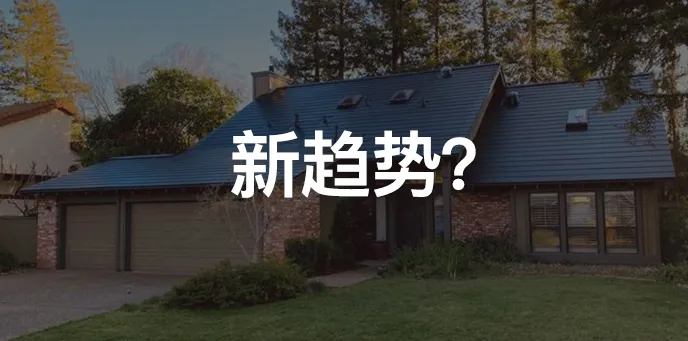Tesla Keeps Moving Forward Amid Pandemic
Recently, a job posting named “Energy Infrastructure Service Manager – Product Service/Operations Maintenance” caught my attention.
According to the job description, Tesla’s Energy department is looking for an experienced manager to oversee the deployment and maintenance of products and systems such as Powerwall, Powerpack and solar energy systems in China.
So, does this mean that Tesla Energy is entering the Chinese market?
Let’s go back to February when Elon Musk tweeted that the timing for Europe and China would be announced soon with regards to the Solar Roof project. However, due to the impact of the pandemic, Tesla is withdrawing most of its US staff from Germany, which may directly affect the construction of the Tesla Berlin factory.
Not long ago, US President Trump also announced a ban on tourists traveling from Europe to the US. Therefore, the Solar Roof project in Europe may be delayed.
However, in China, the project is still progressing, reflecting Tesla’s importance placed on the Chinese market. Now, let’s take a look at what Tesla Energy is.
Tesla Energy
According to the Tesla China website, Tesla Energy mainly consists of several parts: Solar Roof, Powerwall, and Powerpack.
Solar Roof is a solar power generation device while Powerwall and Powerpack are two different levels of energy storage devices.
In summary, Tesla classifies Solar Roof into two types: Solar Roof and Solar Panels, which differ in terms of whether the entire roof is covered with solar panels or only a portion of it.
Solar Roof Source Tesla Official Website
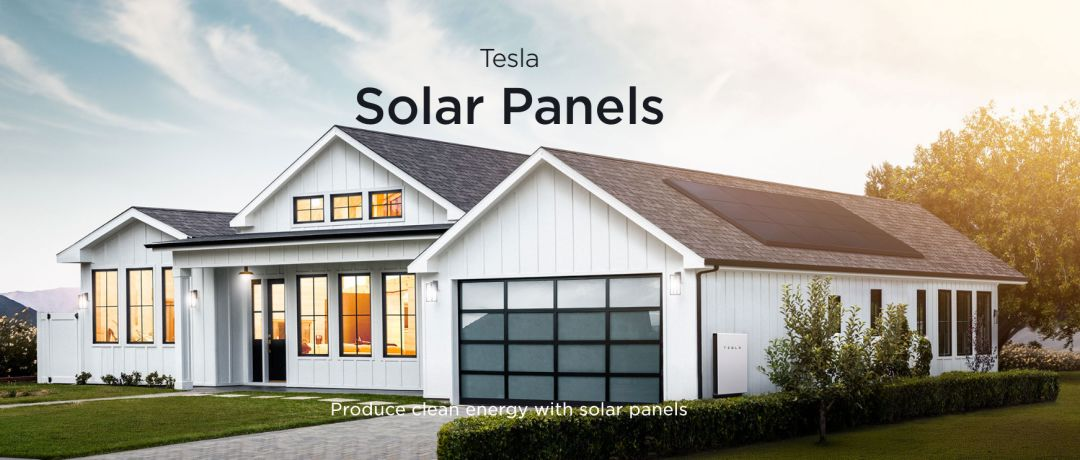
Solar Panels Source Tesla Official Website
Solar Roof has several features. Firstly, it has low cost. Tesla claims that the cost per watt of solar offered by Solar Roof is the lowest among all national suppliers of solar panels. Secondly, it is intelligent. Users can manage their solar systems and electricity consumption anytime and anywhere through the Tesla App. They can also observe the rise and fall of electricity bills in real-time, including their historical usage. Thirdly, it has a long life span. Tesla will provide a 25-year maintenance service.
Then there are two storage devices: Powerwall and Powerpack. Powerwall is a household energy storage battery that works cohesively with Solar Roof or solar panels. Power generated during the day is stored and supplied for use during peak electricity demand or power outage at night. Its dimensions are 1150mm x 755mm x 155mm, with a capacity of 13.5 kWh. Up to ten Powerwalls can be connected together.
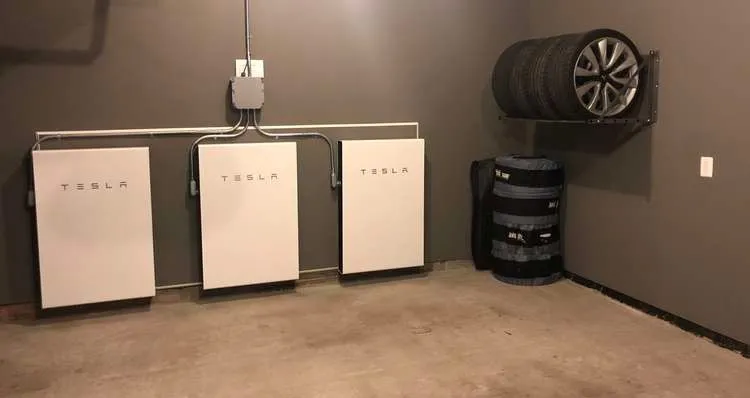
Source Z=Zachariah
Powerpack is a large energy storage battery that has strong mobility. When multiple Powerpacks are connected, they can form a local power grid. Tesla claims that Powerpack can help realize off-peak use, serve as an emergency device, and provide low-priced electricity.
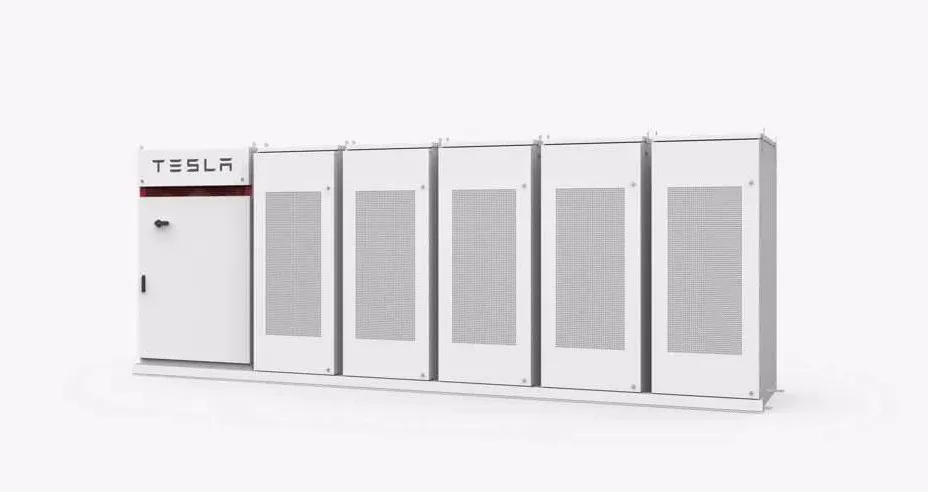
Image Source Tesla Official Website
According to Electrek, in June of last year, Powerpack was used in the UK to charge electric buses.
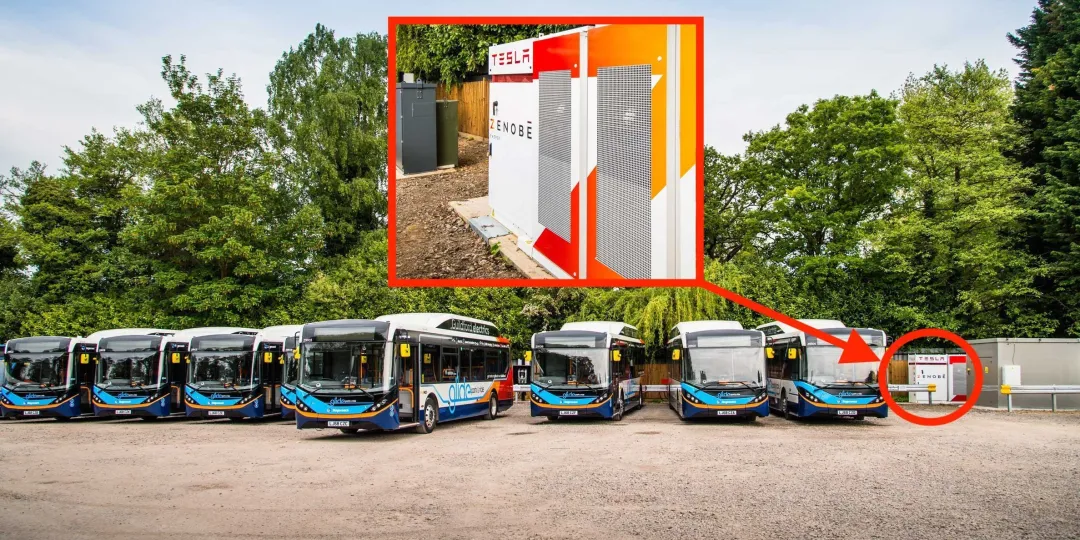
Image Source Electrek
The origin of Tesla Energy dates back to 2016. That year, Tesla bought SolarCity, California, and entered the solar industry, expressing their desire to develop energy business.When it comes to SolarCity, it was founded in 2006 and is the largest solar power generation company in the United States, specializing in developing residential and commercial photovoltaic power projects. In the early days, SolarCity only cooperated with Tesla to supply Powerwall, a home energy storage product for use with solar panels.
However, on November 17th, 2016, Tesla Motors acquired SolarCity for $2.6 billion, making it the largest transaction in the history of the solar industry. Since then, SolarCity has become a wholly-owned subsidiary of Tesla Motors, demonstrating Tesla’s ambition.
In February 2017, Tesla Motors officially changed its name to Tesla, further expanding its electric vehicle business into the residential and commercial solar energy storage system market.
In February of this year, Musk’s tweet once again attracted attention to solar roof in the United States. He announced on Twitter that Tesla is accelerating the installation of solar roofs throughout the United States and posted a recruitment link.
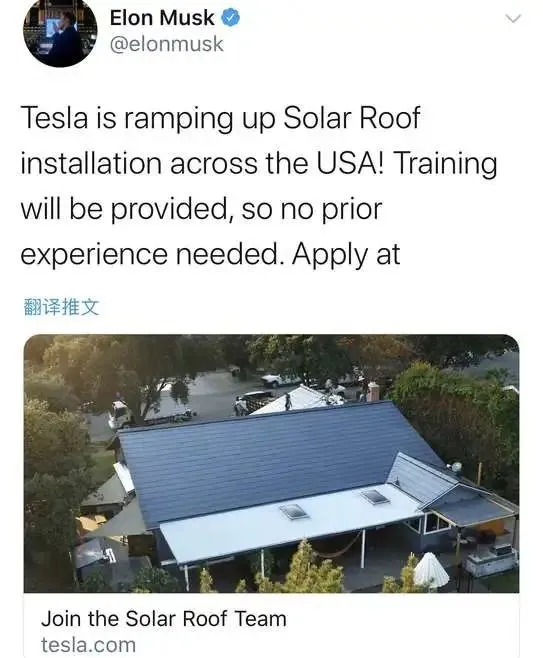
Screenshot of Musk’s Tweet
For a while, everyone was wondering when solar roofs would come to China.
Recently, Tesla Motors Beijing has given the answer by starting to recruit personnel for the “solar energy project”. Does this mean that once the personnel are in place, the project will be in place?
But why is Tesla so eager to promote solar roofs in the Chinese market?
Trend of solar energy
From a policy perspective, in the “Notice of the National Energy Administration on Matters Related to Wind and Photovoltaic Power Generation Project Construction in 2020” issued by the National Energy Administration on March 5th, the “Plan for Photovoltaic Power Generation Project Construction in 2020” attached to it shows that the total budget for newly-built photovoltaic power generation projects in 2020 is 1.5 billion yuan.
Of which, 500 million yuan is used for household photovoltaics and another 1 billion yuan is used for competitive bidding projects (including centralized photovoltaic power plants and industrial and commercial distributed photovoltaic projects) to organize project construction with subsidies.
Simply put, the subsidy policy will directly accelerate Tesla’s “solar energy project” in China.
In addition, at Tesla’s Q4 2019 earnings conference call, Musk stated that solar roofs are an important product line for Tesla and the demand and output of the project is showing exponential growth, with a very strong demand.
The future will not only see the construction of this project by SolarCity, but also through new home builders and the entire roofing industry. Sales of solar roofs are expected to reach 4 million annually.
As Musk said, “This will be a revolutionary product, but because it is a new product, it needs to overcome many challenges which will be overcome, and it will become Tesla’s main product line.”
Looking at Tesla’s Q4 2019 earnings report, it shows that in 2019, Tesla deployed 1.65 GWh of energy storage, more than all previous years combined.
In the fourth quarter, Tesla deployed 54 MW of solar energy, a 26% increase from the previous quarter. Tesla said that since it brings in revenue, they have no reason not to install solar panels.
In plain terms, solar power generation has become a trend in the new era of energy. Tesla will seize this opportunity by integrating solar roofs with its electric vehicle products to bring greater commercial value.
Can it be promoted smoothly?
Regarding the solar roof, let’s talk about whether it can be promoted smoothly in China.
As Musk said, because solar roofs are a new product, they need to overcome many challenges. First is safety, similar to electric cars that catch fire, solar roofs can also have these issues.
Last year, Walmart sued Tesla because the Solar Roofs installed on the roofs of seven of Walmart’s stores caught fire.
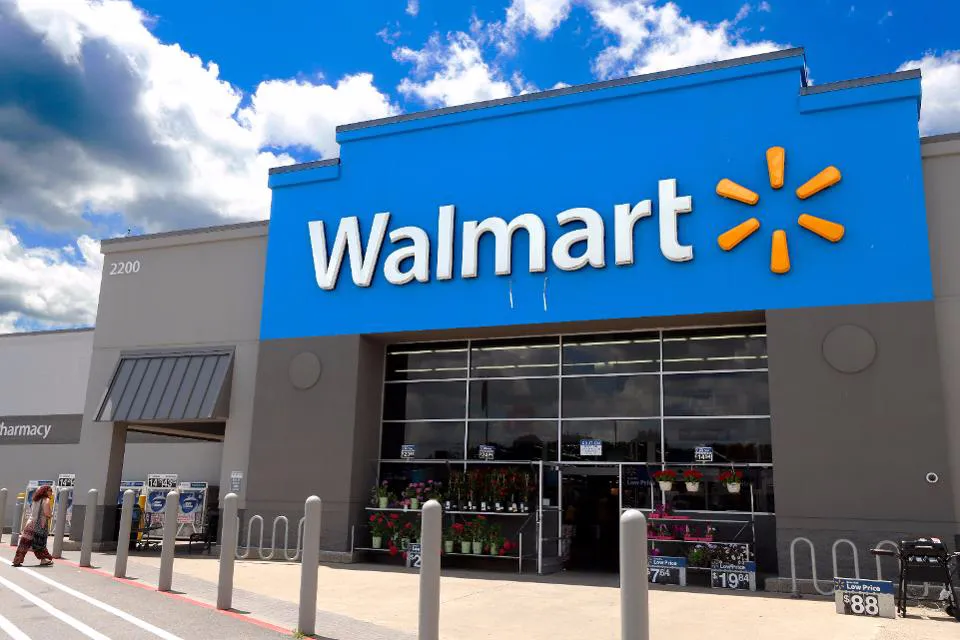
Image source: Forbes
Although the two sides reached a settlement afterwards, safety issues still exist. Therefore, if Tesla wants to promote in China, it must first solve safety issues, because the cost will be severe once problems occur. Recently, Tesla was also summoned due to the “chip incident.”
Secondly, there is a price issue. Taking a 200 square feet (about 185.8 square meters) roof as an example, with an average monthly electricity bill of $100, Tesla’s official website shows that the Solar Roof requires 6.2 kW and costs $26,825 (about RMB 188,000).
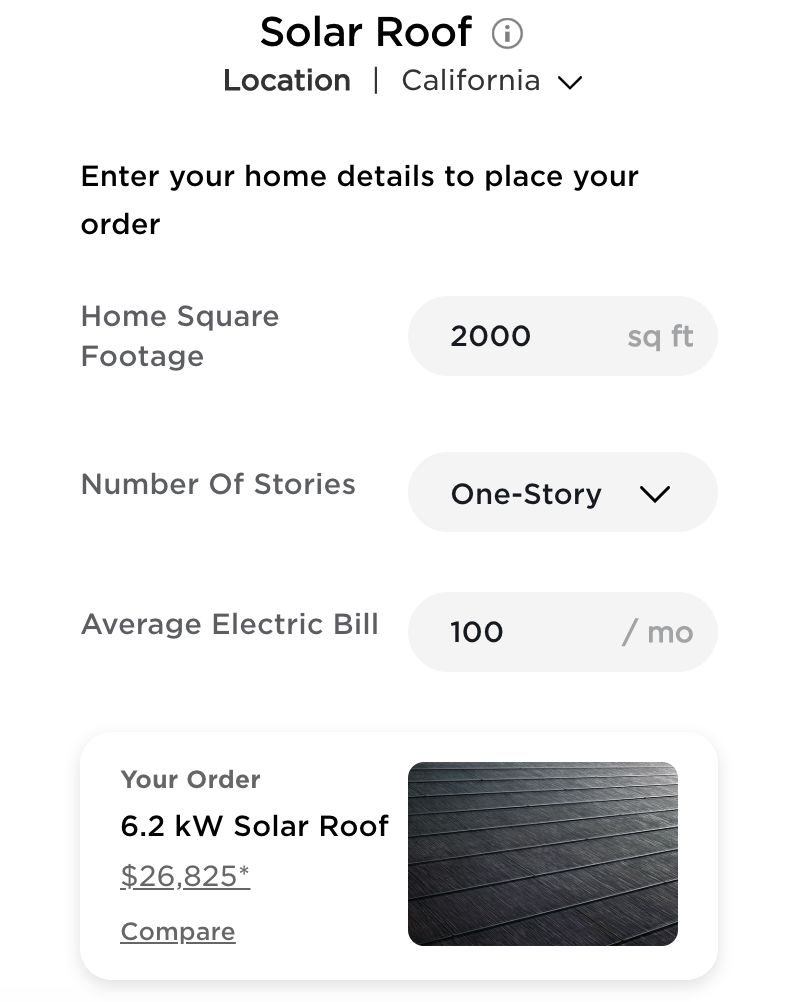
Image source: Tesla’s official websiteIn terms of Solar Panels, there are two options available for subscription and purchase, with four sizes: small, medium, large, and extra large. The monthly subscription fee for the smallest size is $65 (approximately RMB 455), while the largest size incurs a monthly subscription fee of $260 (approximately RMB 1,819), without Powerwall.
If one chooses to purchase, the smallest size costs $7,770, and when paired with one Powerwall, the total price is $15,540 (approximately RMB 10.87 million); the largest size is $27,750, and when paired with two Powerwalls, the total price is $44,104 (approximately RMB 30.85 million).
The image source is Tesla’s official website.
In summary, the prices of Solar Panels and solar roofs are undoubtedly high in China, and lowering the price has become Tesla’s new challenge.
Finally, there are issues with capacity and localization. Tesla’s long-standing major problem has been capacity. If it wants to promote solar roofs on a large scale in China, relying solely on imports is not enough, and localization is inevitable, which can also reduce costs.
In terms of localization, China is different from the United States. Therefore, Tesla needs to consider how to solve issues such as urban differences between China and the United States.
In conclusion, although there are significant challenges in the domestic market, if prices can be lowered, there is still large potential for Tesla’s solar business, especially regarding to B business. Imagine a factory with large-scale Powerpacks that can save a considerable amount of electricity costs in the long term.
From an environmental perspective, large-scale solar businesses can promote the development of clean energy, which is a wonderful prospect.
This article is a translation by ChatGPT of a Chinese report from 42HOW. If you have any questions about it, please email bd@42how.com.
